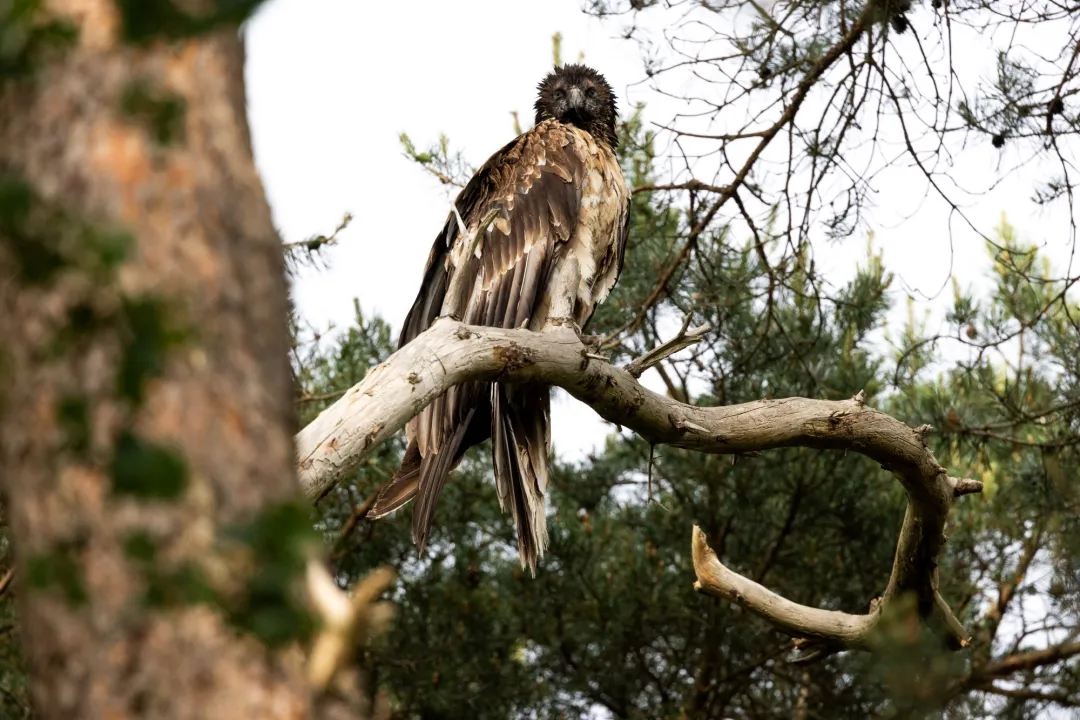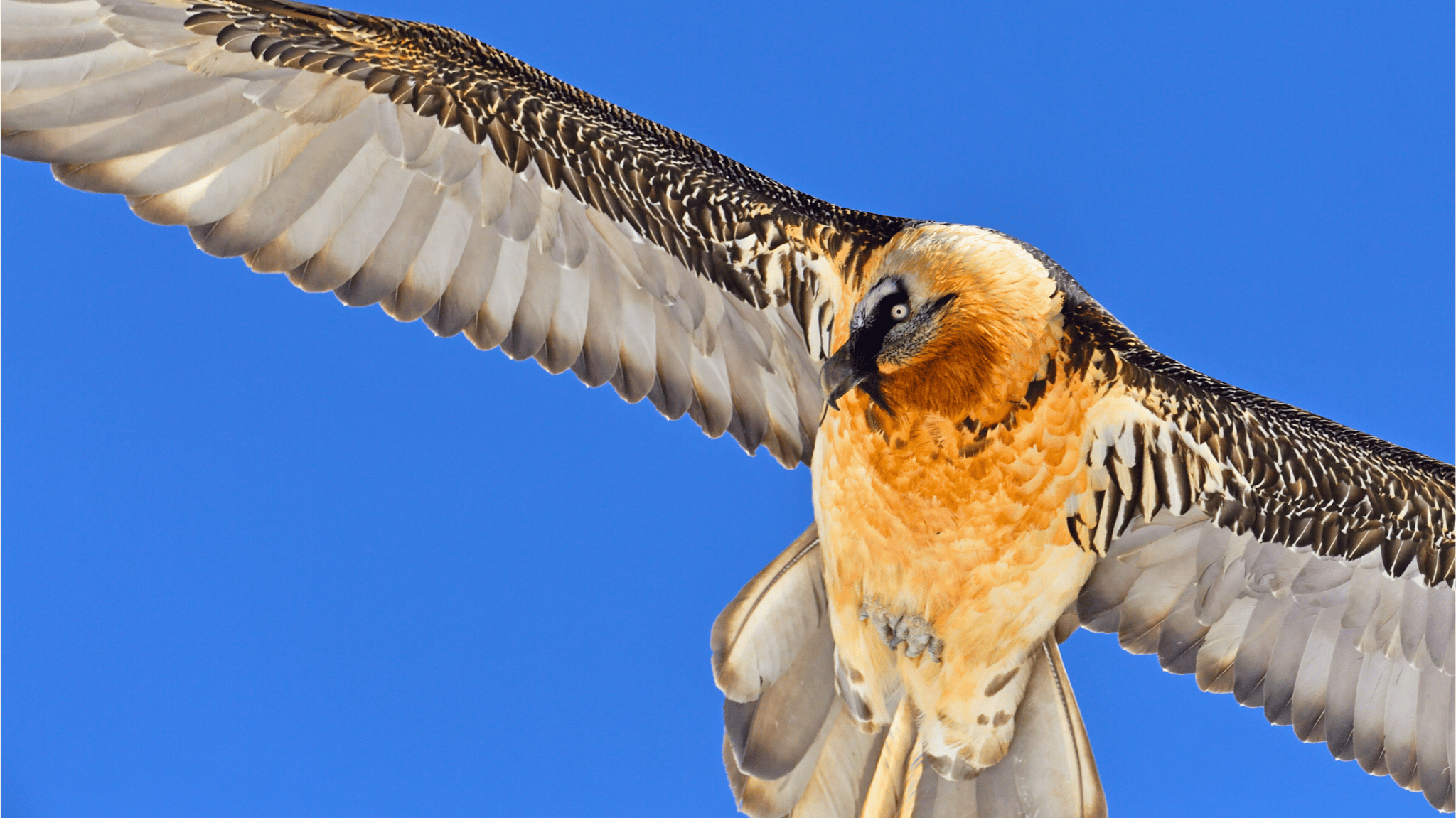
Every year, several Bearded Vulture chicks hatched in captivity are transported to other facilities to be adopted by foster parents for an important reason — to ensure natural rearing. This action enables captive-bred Bearded Vultures to behave like their wild conspecifics, allowing them to breed once they reach sexual maturity and survive in the wild, which is crucial since we breed the species in captivity for conservation purposes. In this blog post, we will take a closer look into the recent chick adoption by an old and experienced foster pair in Austria.
Bearded Vulture foster parents
The Bearded Vulture pair hosted at the Schönbrunn Zoo in Vienna has recently adopted a chick that hatched on 25 February 2021 at the Richard Faust Bearded Vulture Specialised Captive Breeding Centre (RFZ) in Haringsee. “For us, every chick counts. In the wild, only one chick survives in a double-clutch. In captivity, with the help of zoos and breeding stations, we save the other one by transferring it to foster parents within the Bearded Vulture Captive Breeding Network (Bearded Vulture EEP),” says Hans Frey, Manager of RFZ.
Sometimes some chicks have to travel long distances, even via aeroplanes, to reach the suitable facility, but this time the excursion was short and straightforward. “Our pair used to have their own offspring until the two birds became very old, and in the last few years, most of their eggs were unfertilized. Still, since they are highly experienced and excellent parents, they were selected by the Bearded Vulture EEP as foster parents,” explains Zoo Director Stephan Hering-Hagenbeck. As expected, the two foster parents are doing a great job. “When we carefully placed the chick in their nest, they accepted it immediately. They take turns feeding and warming it. A camera is installed above the nest so that we can observe the rearing process,” explains Animal Keeper Regina Riegler.
The little chick has a big purpose
At the moment, the chick still fits in the palm of a hand. Yet, it has the potential to grow up to be one of the world’s largest soaring birds! And just like any chick within the Network, there are big plans for the little one. In the next months, we will decide whether it will be kept in captivity to eventually produce its own chicks, or be released into the wild this year to help reintroduce or restock Bearded Vulture populations. Until the decision is taken, however, it still has to develop correctly. The next step is to take blood samples to determine the chick’s sex. Suppose the destination of chicks is releasing them into the wild. In that case, we typically select two to three birds from the entire breeding network that match in age, DNA, and sex to place them in a hacking platform together in the wild to acclimatize before the birds fledge. From then onwards, local project partners from the different sites across the Alps, France and Spain, monitor the chicks from a distance and feed them via chutes without any human contact until they are independent. Thus, they get prepared for life in the wild before taking to the skies step by step.
Breeding Bearded Vultures for conservation purposes
Back in 1978, the Vulture Conservation Foundation (VCF) and partners united to bring the Bearded Vulture back to the Alps. To achieve this goal, pioneers established a captive-breeding programme to produce chicks and release them into the wild, with the first release taking place in 1986 at the Austrian Hohe Tauern National Park.

It took time and perseverance since Bearded Vultures only reproduce when they reach around ten years old, with one chick surviving per year. Still, thanks to these efforts, the species returned to the Alps, making it one of the best wildlife comeback stories of all times! Ever since this success, more projects were launched across France and Spain. Today, the Bearded Vulture Captive Breeding Network, coordinated by the VCF on behalf of EAZA‘s EEP, closely works with over 40 partners, including zoos, to ensure the best breeding results from the 179 birds in captivity. Every year, the VCF and partners release young captive-bred Bearded Vultures into the wild across Europe to reintroduce the species to areas where it went extinct or boost local, vulnerable populations. Up until today, a total of 343 captive-bred Bearded Vultures were freed into the wild.
To follow the news of the breeding season, follow #BeardedVultureBreedingSeason on Facebook and Twitter.







